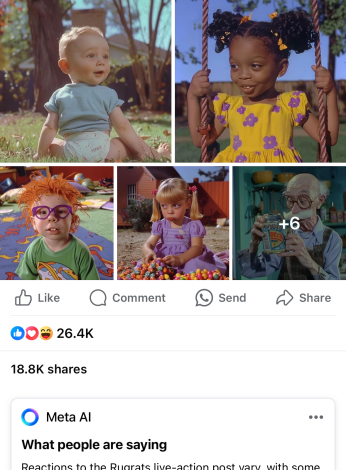Meta Is Still Trying to Figure Out How to Identify AI-Generated Images

Meta is changing how it’s labeling AI images on Facebook and Instagram after photographers were caught in the crossfire between the brand and its increasingly robot-driven feeds.
I’m a couple decades too young to spend too much time on Facebook, but much has been said about how AI-generated images have taken over the website, often tied to misinformation about new movies or, more dangerously, world events. It didn’t take me more than a minute of scrolling to find this AI-generated series of images claiming to be from a live action Rugrats movie. Take note of Tommy Pickles’ backwards head.

Credit: Michelle Ehrhardt
Meta isn’t wholly complacent here, as the company does try to label AI images using a “Made with AI” tag when it detects them. While the images I saw weren’t tagged yet, the post I saw ironically had a blurb from Meta AI attached to it pointing out that the images were “AI-generated.” Unfortunately, these solutions are now affecting genuine photographers using common post-processing effects.
In a post to its newsroom, Meta says “some content that included minor modifications using AI, such as retouching tools, included industry standard indicators that were then labeled ‘Made with AI.’” To avoid claiming whole images were generated with AI when they were not, the company is now changing its “Made with AI” label to read “AI info,” which users will be able to click on for more details about how exactly AI was used.
This could possibly be a temporary approach, as Meta says it’s currently working with “companies across the industry” to refine its labeling approach. But it’s a hard line to walk.
Artists have complained that even when they’ve used no AI tools, their images have been flagged as “Made with AI,” implying that they were generated from the ground up. For example, a Pride Month image from tech influencer iJustine was tagged as “Made with AI” after she changed the color of its background and added a lens flare.
At the same time, requiring users to click through to find how AI was used to make an image could reduce the tag’s usefulness. It also might still fail to address photographer’s concerns, depending on how accurate the tag’s information is.


